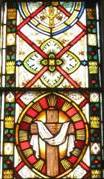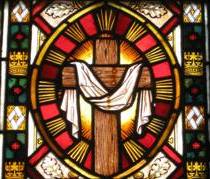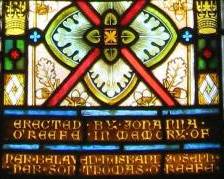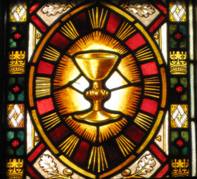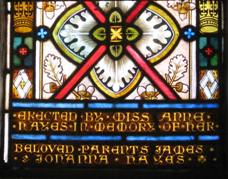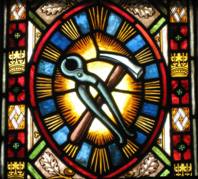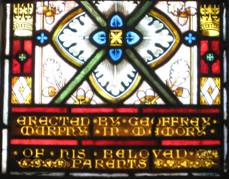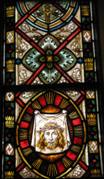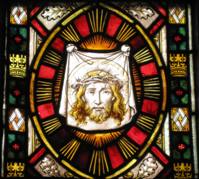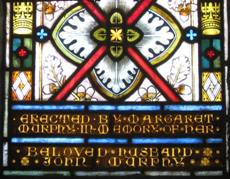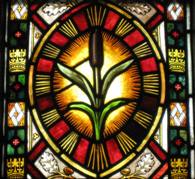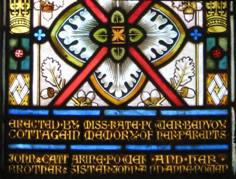The fifth nave window
This window can be seen properly only from the stairs of the gallery. The cross is the main detail in the window, signifying the horrible death that Jesus suffered. It also symbolises Christ’s victory over death and sin. The cloth draped over the cross is the shroud that Jesus was wrapped in when laid in the tomb. The empty shroud was left behind when Jesus rose from the dead. The cross and shroud together symbolise Jesus’ death and resurrection. Together, they are known as the empty cross or the shrouded cross or the resurrection cross –
“Then Simon Peter came, following him, and went into the tomb. He saw the linen cloths lying there, and the face cloth, which had been on Jesus’ head, not lying with the linen cloths but folded up in a place by itself. Then the other disciple, who had reached the tomb first, also went in, and he saw and believed; for as yet they did not understand the Scripture, that he must rise from the dead. [John 20:6-9]
The dedication at the bottom of the window is shown in the image at far right and reads,
O’KEEFFE IN MEMORY OF
& HER SON THOMAS O’KEEFFE

